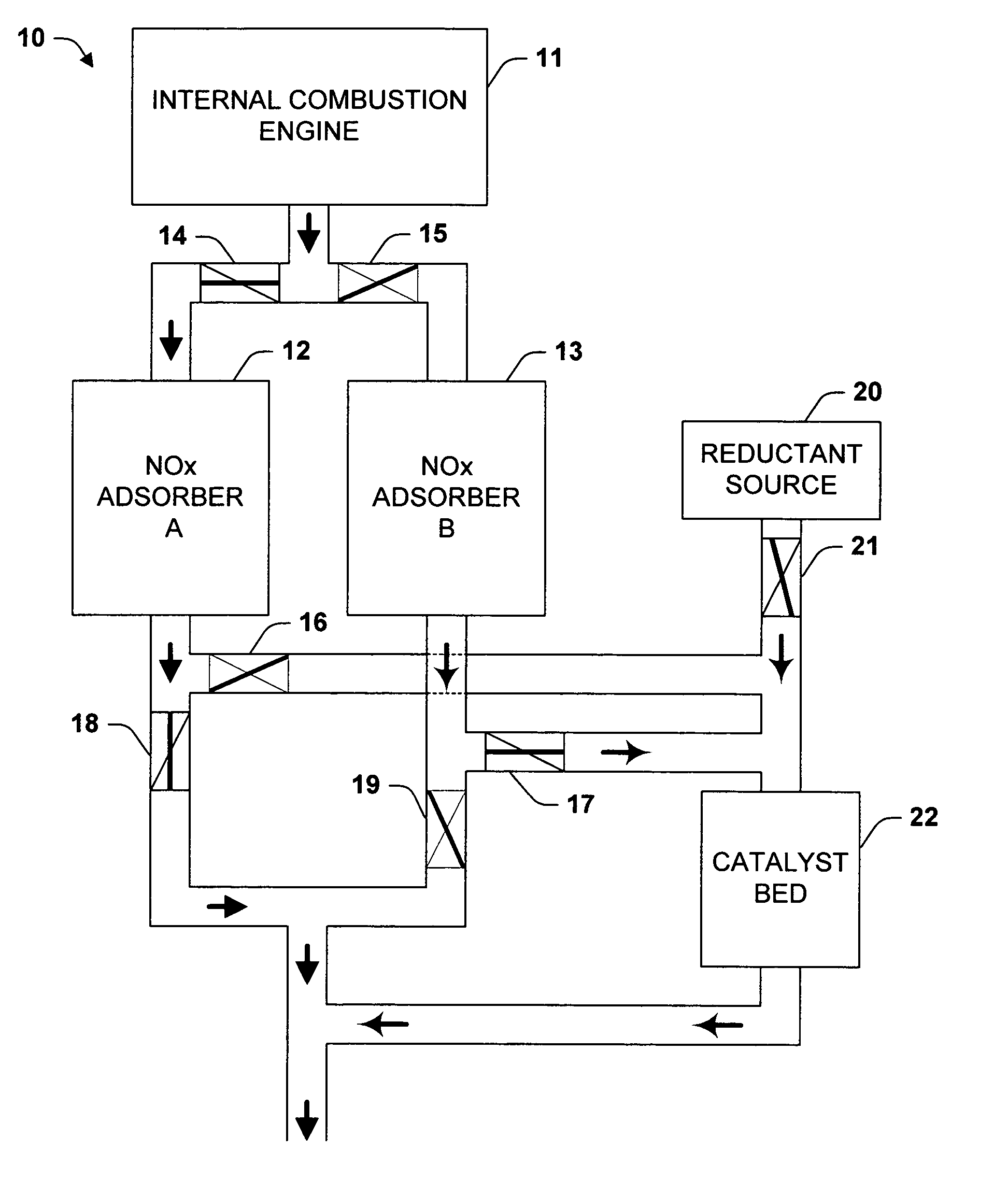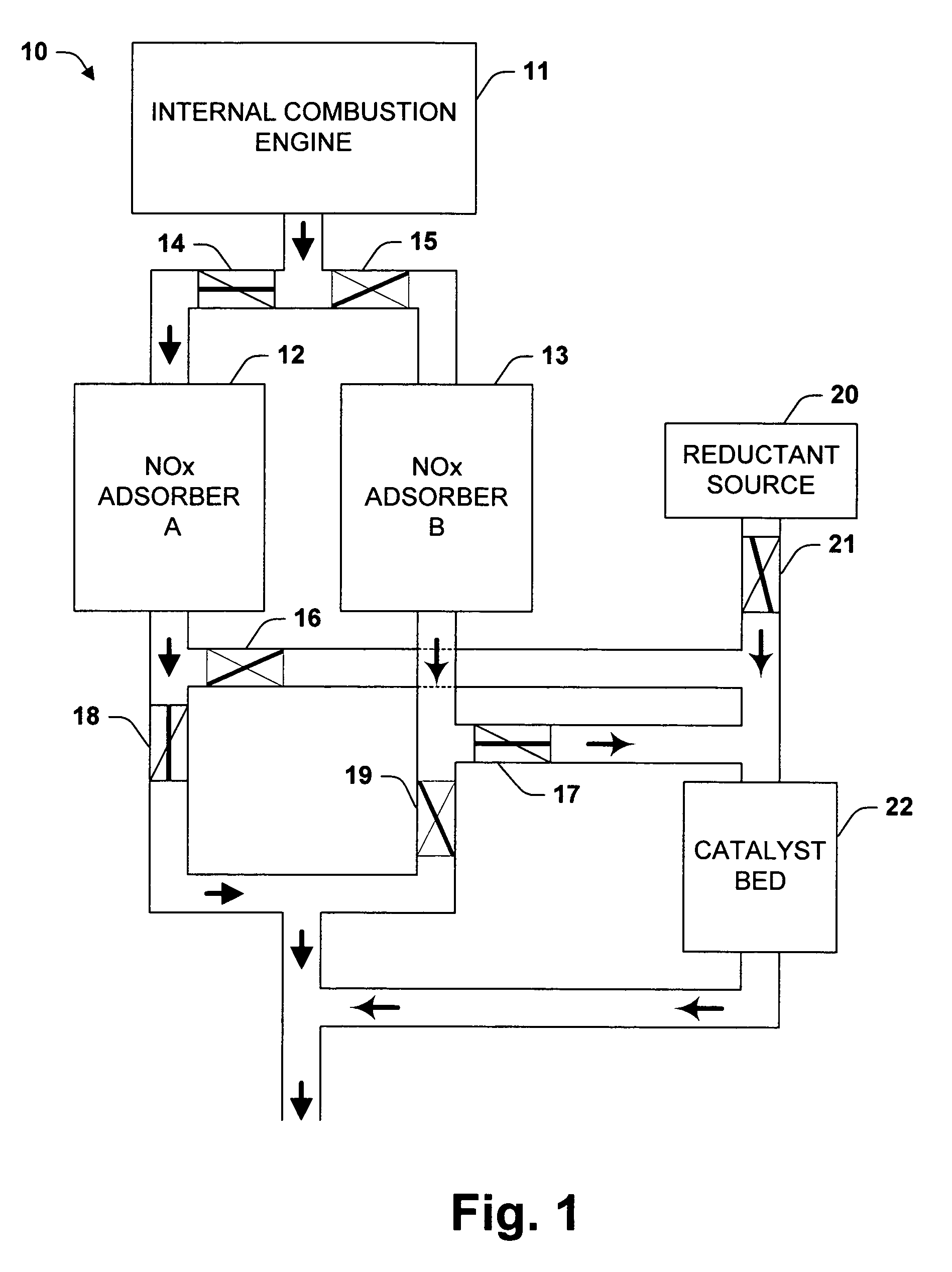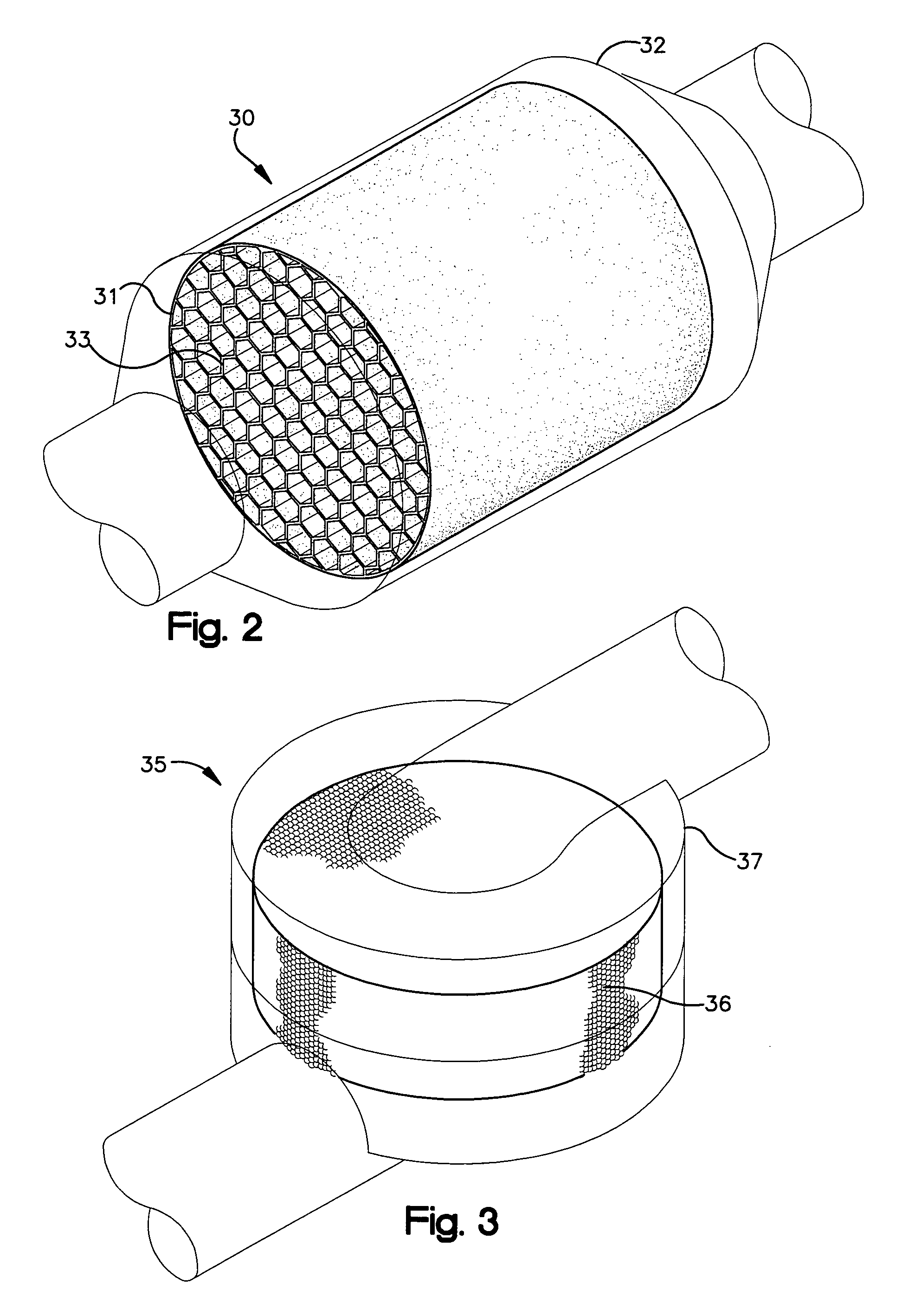Temperature swing adsorption and selective catalytic reduction NOx removal system
a technology of nox removal system and temperature swing adsorption, which is applied in the direction of engines, mechanical equipment, machines/engines, etc., can solve the problems of excessive meeting effort, exhaust is too oxygen-rich for three-way catalysts to be effective, and the emission of internal combustion engines. achieves the effect of facilitating the use of temperature swing adsorption
- Summary
- Abstract
- Description
- Claims
- Application Information
AI Technical Summary
Benefits of technology
Problems solved by technology
Method used
Image
Examples
Embodiment Construction
[0028]FIG. 1 is a schematic illustration of an exemplary vehicle 10 according to one aspect of the present invention. The vehicle 10 includes an internal combustion engine 11, NOx adsorbers 12 and 13, a reductant source 20, and a catalyst bed 22. The internal combustion engine 11 provides a motive force for the vehicle 10 and produces an exhaust containing NOx. The adsorbers 12 and 13 absorb NOx from the exhaust. While one of the adsorbers is treating the main exhaust flow, the other adsorber can be isolated from the main exhaust flow and regenerated. Regeneration involves inducing desorption of NOx and combining the desorbed NOx with a reductant supplied by reductant source 20. The reductant and NOx react over the catalyst bed 22 to reduce NOx to N2.
[0029]The various flows are managed with valve and conduits. Valves 14 and 15, in cooperation with valves 18 and 19, selectively direct the main exhaust flow to one or the other of the adsorbers. In FIG. 1, the valve 15 is closed while ...
PUM
 Login to View More
Login to View More Abstract
Description
Claims
Application Information
 Login to View More
Login to View More - R&D
- Intellectual Property
- Life Sciences
- Materials
- Tech Scout
- Unparalleled Data Quality
- Higher Quality Content
- 60% Fewer Hallucinations
Browse by: Latest US Patents, China's latest patents, Technical Efficacy Thesaurus, Application Domain, Technology Topic, Popular Technical Reports.
© 2025 PatSnap. All rights reserved.Legal|Privacy policy|Modern Slavery Act Transparency Statement|Sitemap|About US| Contact US: help@patsnap.com



